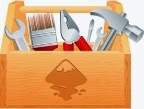Racial inequality in the Workplace is a concept that is extremely old and as distasteful today as it was in the past. There have been several laws all over the world banning any sort of discrimination in the workplace based on race. However, laws can only be created to be imposed on people; it cannot change the way people think, feel or act. Even in countries as developed and as sophisticated as the United States of America, people still face discrimination because of being of a different race.
According to the U.S. Equal Opportunity Employment Commission, race discrimination refers to treating someone with a difference, generally in a negative sense or unfavorably; because he or she belongs to a certain race. Here, the term unfavorably indicates a number of actions in employment, such as hiring, firing, wage, promotion, suspension, payment, bonus, assignment, or any other aspects.
Again, any sort of harassment due to one’s race is strictly prohibited in any form of employment in the US which racial slurs or any kind of remarks based on one’s race. This is applicable for the victim’s colleague, supervisor, employer, customer or client.
Even after all the laws and regulations, racial discrimination is still seen in a number of organizations. According to a study in the Law and Society Review, Hispanics and Blacks are likely to receive fewer invitations to interviews and job offers than Caucasians.
However, racial discrimination is usually subtle and masked by other reasons which make it harder to pinpoint or detect it. That is, if a person feels he or she is being discriminated because of their race or color or ethnicity, there is usually no way to prove it. When confronted about it, their employees may simply deny the fact and base the real reason being low experience or performance of the worker. For example, if during an interview, if a person feels like they will not get the job because his or her race or color is not preferable to the interviewer, there will be little chance of proving it because there can be a number of plausible reasons behind it.
Again, the reasons behind a late promotion, less salary or fewer assignments may be racial discrimination or inexperience or bad work ethics. Therefore, in maximum times, direct racial discrimination is not seen and hard to catch.
Reluctance to assign a certain important project or responsibility to a person because of their race, or passing on a promotion or a raise to someone less qualified can be a sign of racial discrimination as well.
State laws in the US do not stand still when it comes to racial inequality in the workplace. Rather, there is strict prohibition of racial discrimination in the workplace by state and federal laws. The primary federal laws addressing racial discrepancy in work falls under Title VII of the Civil Rights Act of 1964. According this law, the employers are strictly prohibited to:
a. Refusing to hire a person because of his or her race,
b. Firing a person because of his or her race,
c. Paying a person less salary or lesser benefits because of his or her race,
d. Not providing deserved promotion, raise or benefits to a person because of his or her race,
For the same reason, organizations or employers are prohibited to make decisions or assign assignments based on a person’s color, ethnicity or race. Labor unions or office groups are prohibited to deny membership to a person based on their race.
However, at both state and federal levels, deadline is a key factor. There are strict deadlines for reporting or filing complaint which must be met for the complaint to be taken into account.
 This blog has been quiet for a long time. I tried to write something a couple years ago but did not get any traction to keep going. Here is another attempt.
This blog has been quiet for a long time. I tried to write something a couple years ago but did not get any traction to keep going. Here is another attempt.
